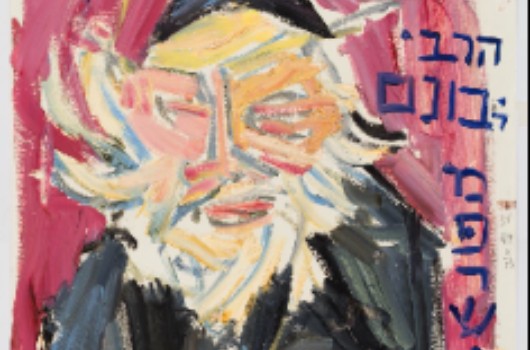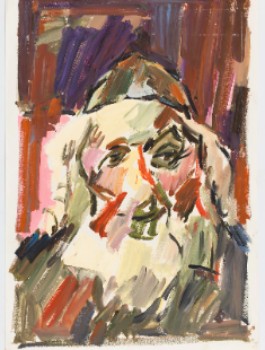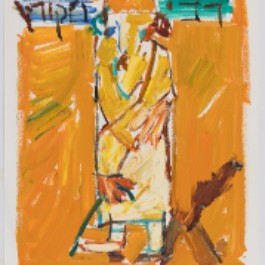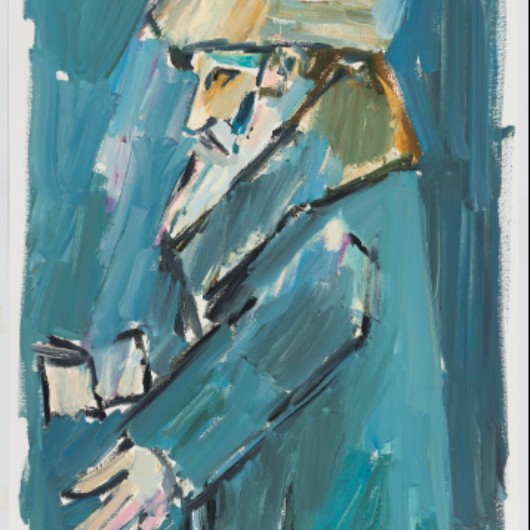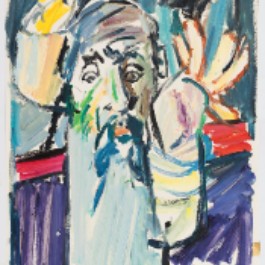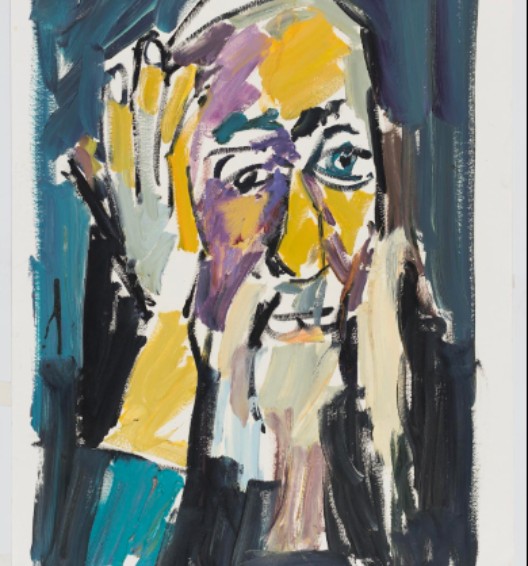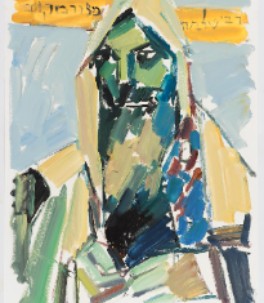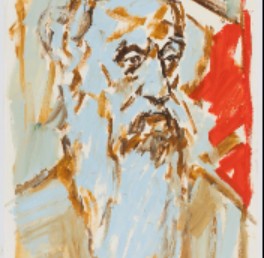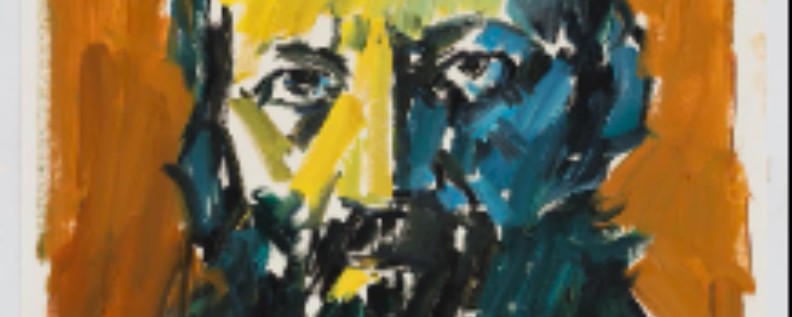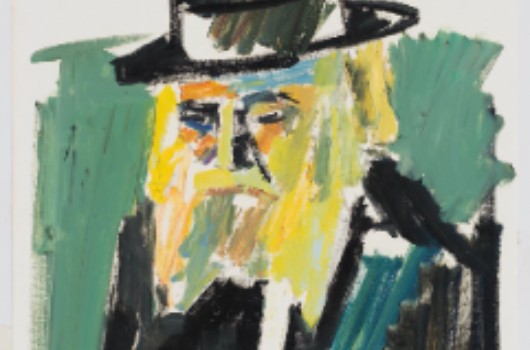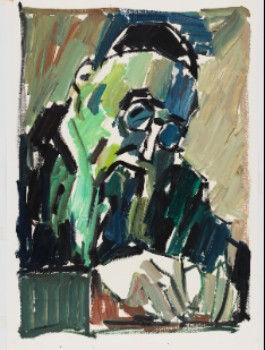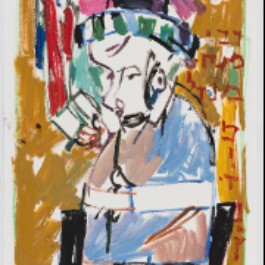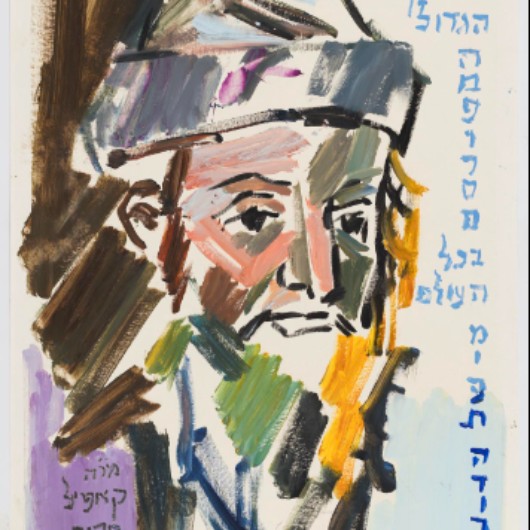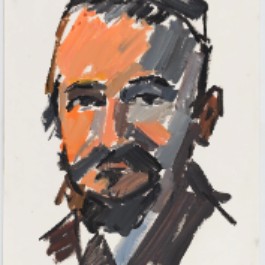Rabbinic characters have appeared in Litvinovsky's works since the 1920s, but only in the last decades of his life did he begin to obsessively paint portraits of rabbis, most of them inspired by photographs and drawings he found in books. Unlike the official portraits, which he created on commission and based on precise sketches, the portraits of rabbis were created as part of an artistic study and as an avenue of a spiritual quest that led Litvinovsky to identifying with the rebellious roots of the Hasidic movement. Accordingly, these works are characterized by the expressionist approach with disjointed shapes created in free brushstrokes with the aim of drawing portraits that exist between the physical, the spiritual and the sublime.
In the modern era, paintings of rabbis and their photographs have become a popular genre among the ultraorthodox public, following the prescription to “let your eyes see your teachers” (Isaiah 30:20). In contrast to these, Litvinovsky's works stand out in their unusual approach: the figures of his rabbis lack a uniform historical, geographical or identity framework and are not intended to correspond with any specific figure. They express emotional identification by means of modern expressive intense colouring, as if the artist wanted to “redeem” the popular familiar genre. Twenty-two of these works were converted into lithographs and published in two elegant albums, in 1979 (Ein Hod) and 1980 (Morello Publishing, Paris) respectfully.

